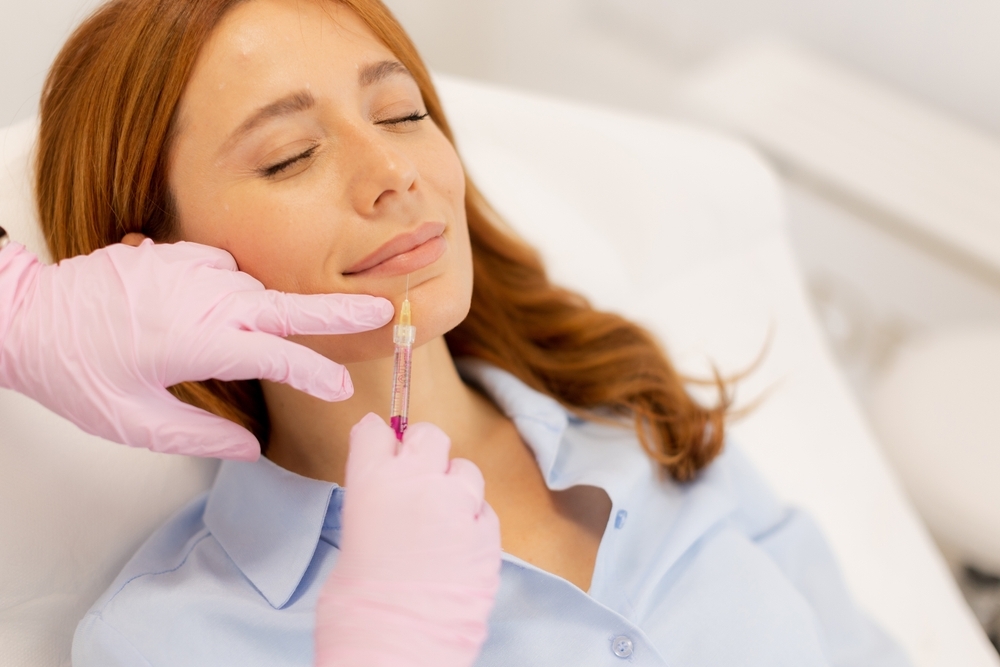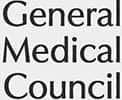The venesection was painless to say the least, thank you for using local anaesthetics; highly recommended
Do you have areas of stubborn fat that you have been struggling to get rid of? For some of us, no matter how much we diet or exercise, we simply can’t get rid of certain pockets of fat in specific body areas. Fat deposits can even be genetic — meaning, regardless of diet and exercise, it is extremely difficult to achieve the body shape you desire. So unless you choose to treat fat deposits with fat reduction injections or cosmetic surgery, such as liposuction, they are probably going to stay put!
If small fat deposits knock your confidence and you find yourself feeling self-conscious about your body shape or when wearing tight-fitting clothes or a swimsuit, fat loss injections could change that. Why not take a step toward the body shape you want and opt for injection lipolysis or fat reduction injections? Lipolytic injections are one of the most effective non-surgical treatments that can target and reduce fat in specific areas to contour your body shape.
When you have tried eating a healthy diet and exercising regularly but still can’t achieve your preferred body contours, lipolytic injections may be the solution. This revolutionary fat-loss treatment dissolves local fat deposits and provides a way to remove stubborn areas of fat without the need for liposuction or invasive surgery. Read on to find out more about this clinically proven way to get rid of stubborn fat and enjoy lasting body confidence.
Fat reduction injections are effective for reducing fat deposits and stimulating collagen production, which can tighten lax skin and improve skin tone and firmness.
Popular body areas for fat loss injection lipolysis treatment include:
• Double chin
• Pre-jowl sulcus (jawline)
• Upper arms
• Neck fat (buffalo humps)
• Male chest fat (man boobs)
• Lower abdomen (muffin top)
• Hips
• Pre jowl sulcus
• Inner thighs
• Knees.
Facial contouring with lipolytic injections is effective for:
• Reducing double chins
• Creating a more defined jawline.
At Harley Street MD, you can discuss your goals during a free lipolysis treatment consultation. Our practitioners design an individualised plan before starting treatments with fat reduction injections and provide a realistic idea of how many treatments you will need and how long it will take to achieve the results you are seeking.
Injection lipolysis works by injecting a water-based solution that contains deoxycholic acid, which breaks down the membranes of the fat cells. This causes the release of the inner lipid (fatty) content. The fat is then naturally removed by the lymphatic system and the liver and expelled over three to four weeks in your urine.
Lipolysis treatment is administered via injection and is a flexible fat-dissolving treatment that can be used almost anywhere in the body. It is particularly popular in reducing fat deposits in areas such as the double chins, upper arms, hips and the lower stomach. You can be assured of the safety and effectiveness of EU-approved Aqualyx lipolytic injections, which have been licensed for use in the UK since 2013.
Clinical studies have proven that fat loss injections with Aqualyx injection lipolysis treatment break down fat cells using a process called hydrolysis. This process results in the body naturally removing the fat contained inside the cells. On average, three to five treatments with lipolytic injections are required, but this is dependent on the volume of the fat deposit and the body area being treated.
The most popular cosmetic surgery procedure to remove fat and sculpt the body is liposuction. This plastic surgery procedure literally sucks out the fat, transforming your body shape. Although this is a guaranteed way of removing fat deposits, complications and risks of liposuction plastic surgery include but are not limited to the following:
• Infection, which can cause skin necrosis and a longer healing time
• Loose skin that doesn’t retract due to a lack of elasticity as you age or due to the removal of too much fat in a specific area
• Contour irregularities (skin may be bumpy or look wavy in the areas treated)
• Nerve damage, causing numbness or pain in areas treated, which may be permanent
• Asymmetry or unevenness of treated areas.
Instead of liposuction, which can be painful and require weeks off work, injection lipolysis is a non-surgical fat removal treatment that can be done with minimal downtime. Even more important, it does not have the same risks and associated complications and is an effective and safe way to get rid of fat deposits.
Despite the short treatment time, lipolysis treatment delivers powerful and impactful results, and you’ll see your fat deposits reducing for approximately four weeks after the treatment. If you want fat removal focused on a specific area of your body, or you need help ‘contouring’ your face or body, injection lipolysis is a clinically proven, low-risk, non-surgical treatment for fat removal.
Currently, Dr. Chai Tan works as a trainer and instructor at a prestigious aesthetic academy, instructing other certified medical professionals, including doctors, dentists, and nurses, in foundational and advanced non-surgical aesthetic medicine techniques. One of the few aesthetic clinics in the UK with CQC registration, Harley Street MD was founded by Dr. Chia Tan, who also serves as the clinic’s director of injectable fat reduction injections. In addition, Dr. Tan is a renowned cosmetic doctor who holds a GMC registration and has had several papers published in academic and medical journals. Dr. Tan remains a member of the following organisations:
• Royal College of Surgeons (MRCS)
• British College of Aesthetic Medicine (BCAM)
• Royal College of General Practitioners (MRCGP)
Dr. Chai Tan’s passion for cosmetic medicine is further evident from the many positive Google reviews of treatments performed at Harley Street MD in London.
The cost of lipolysis treatment will vary depending on the qualifications and experience of the practitioner, clinic location, body area or areas to be treated, and the number of sessions you need. On average, the cost will vary between £350 and £500 per session. At Harley Street MD in London, Aqualyx fat loss injections are performed by Dr Tan, a GMC registered doctor, and treatments start at £400.
When lipolysis treatment is carried out correctly by an experienced medical professional, it should cause very little pain or discomfort. Prior to administering any injections, your practitioner should numb the area with a local anaesthetic, which will block the pain signals from nerves. If at any point you’re in pain or feel unsure about any side effects, it’s important to let your aesthetic practitioner know straight away.
As with any needle procedure or injection, there is a risk of redness, mild bruising and swelling afterward — but this is typically mild and completely normal with injection lipolysis.
There is no downtime after lipolytic injections, and you can return to normal activities straight after fat-dissolving injection treatments. You may want to take a day off to allow bruising and swelling to reduce, but this is a purely personal choice.
This differs from patient to patient — but we generally recommend at least two treatments with Aqualyx fat reduction injections. For larger fat deposits, you can continue to have treatments with lipolytic injections until you achieve your desired results.
Fat-dissolving injection treatments can be performed every four to six weeks. This gives your body time to naturally remove the fat released from the cells, following Aqualyx fat loss injections.
Cellulite can appear less prominent when subcutaneous fat is reduced following injectable lipolysis.
The research and studies references that we used in addition to our internal research have all been referenced here; most of them have an external link to the scientific publication. We work hard to bring you the most recent, impartial, factual, and evidence-based information to help you make informed decisions.
References
• Mlosek RK, Skrzypek E, Migda B, Migda M, Woźniak W. The efficacy of high-frequency ultrasound-guided injection lipolysis in reducing fat deposits located on the inside of the knees. J Ultrason. 2021;20(83):e273-e278. doi: 10.15557/JoU.2020.0048. Epub 2020 Dec 18. PMID: 33500794; PMCID: PMC7830143. From: NCBI
• Dixit VV, Wagh MS. Unfavourable outcomes of liposuction and their management. Indian J Plast Surg. 2013 May;46(2):377-92. doi: 10.4103/0970-0358.118617. PMID: 24501474; PMCID: PMC3901919. From: NCBI
PROCEDURE TIME 45-60 minutes
BACK TO WORK Same day
ANAESTHETIC Topical
FULL RECOVERY 1-2 weeks
DURATION OF RESULT Permanent
RESULTS 3-4 weeks
The venesection was painless to say the least, thank you for using local anaesthetics; highly recommended
‘I blast and cruise for years. When my haematocrit level went up, my GP did not seem to care and I couldn’t possibly wait for weeks to see a specialist. I am so lucky that to have found Harley Street MD through my research and it is the only clinic I have found that accept self-referral for therapeutic venesection due to AAS use.
I was recommended by my gym mate, I can’t thank you enough for sorting out my prolactin issue due to steroid use. You are a godsend.

Your skin needs extra TLC in winter. However, keeping it hydrated during the summer is also essential. The additional sun, humidity, and sweating can make you susceptible to issues like…

Lip enhancement is a fantastic way to improve the overall appearance of your lips and your face, whether you want a Kylie Jenner look or to fill them out for…

While testosterone therapy has become increasingly commonplace for men, there is less discussion around testosterone treatment specifically for women. We look at what is considered a healthy level of testosterone…

The shape of your nose can significantly impact not just how you look but also your self-confidence. As much as friends and family may assure you they can’t see the…







